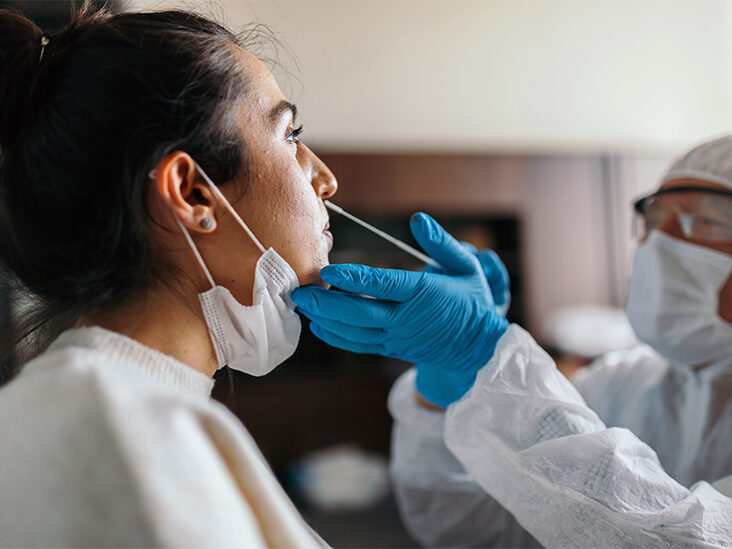If you have COVID and are at home, you may be wondering how long you will remain contagious. You don’t want to isolate for longer than necessary, but you also don’t want to endanger the health of your friends and coworkers—or even strangers.
Unless they have substantial ongoing or new symptoms, patients with COVID in Australia are expected to be isolated for seven days (then the fine print in state and territory rules says they should stay away for longer).
So, what are the risks of leaving home after a week if you’re still contagious?
What study has been done on Omicron’s infectious period? Omicron has a three-day incubation period (the time between infection and the onset of symptoms), with the person becoming infectious a day or two before symptoms appear.
Omicron symptoms last 5–6 days on average, compared to 7–10 days for Delta and earlier forms. Because of the higher number of mutations on its spike protein, Omicron is more infectious because it is better at evading the body’s immune system.
The Omicron variation appears to induce milder sickness and more asymptomatic infections, as well as being stronger at evading the human immune system, which explains the high rate of breakthrough cases with the Omicron form.
What if my RAT test is still positive on day 6 or 7?
Rapid antigen tests (RATs) may not detect COVID until at least two days following exposure to the virus, according to data from the Omicron epidemic.
RATs are also less accurate if you don’t have any symptoms, according to the Therapeutic Goods Administration (TGA). As a result, you’re more than likely to test positive on a RAT a few days after exposure. If you don’t have any symptoms, you could obtain a false negative result in the days afterward.
Because of their great sensitivity, PCR tests are more likely to detect viral particles earlier than RATs, and PCR will continue to detect viral particles for longer.
Even if the person is not contagious, relying on this test could lengthen the period of isolation. Despite this, the “gold standard” for detecting SARS-CoV-2 infection is still a PCR test.
Most states don’t require a positive RAT or PCR test to be released from isolation, but they do recommend that those who still have symptoms (such as a sore throat, cough, shortness of breath, or a runny nose) continue to be isolated. If you have symptoms and take a RAT test, a positive result could mean you’re still contagious.
COVID testing is used to identify people who are currently infected with the virus.
As a result, RATs can detect the great majority of contagious illnesses in crowded settings, including long-term care institutions, businesses, and schools.
Meanwhile, new research (including data from the [National Basketball Association’s extensive COVID testing programme]) suggests that with the Omicron variant, up to half of those infected could still be infectious on day five (the recommended isolation period in the United States) – and possibly beyond.
Isolation is for seven days in Australian states and territories if the person has no symptoms.
It has been suggested that isolating for eight days and wearing a mask to protect others for a total of ten days might be preferable.
Those who are released from isolation in the Northern Territory are required to wear a mask for an additional seven days. After being isolated, South Australians are instructed to wear a mask for three days.
After that, what about masks?
If patients are still symptomatic after their seven-day isolation period, they may become contagious. Most people are no longer infectious after 10 days. Regardless of the variation, multiple studies have demonstrated that after day ten, there is very little, if any, transmission.
People are deemed non-infectious once they have fully recovered from the sickness and have no symptoms, as the virus load they carry is very low.
A person who has recently recovered from COVID does not need to wear a mask because they are not at danger of re-infection with the same variety. As a result, they do not pose a COVID risk to others.
However, after 12 weeks, when reinfection is a possibility, they will need to reassess their advice.
Your age and immunological condition can influence the extent of protection you get from vaccination or previous COVID infection. It’s also worth mentioning that recovering from Omicron won’t prevent you from seasonal colds and flu, or COVID variations in the future—but wearing a mask might.
Those who are immunocompromised, on the other hand, should wait 20 days before leaving isolation because it has been established that such individuals shed viruses for longer.
Advice on when to leave the house
Early detection of infection and implementation of public infection prevention measures are essential for protecting ourselves and our community from transmissible diseases such as COVID.
RAT testing needs to be combined with preventative measures, including isolation till symptoms diminish and wearing masks in indoor places and at public events until RAT tests are uniformly sensitive enough to detect the absence of the virus with certainty.





